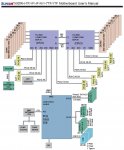- Joined
- Feb 6, 2014
- Messages
- 5,112
Awesome to see the little Optane Memory devices still able to swing some serious numbers at small recordsizes. For a homelab scenario this would be an awesome SLOG, able to handle a pair of 1Gbps links in MPIO round-robin at full speed (although it might wear the poor thing out awful quick!)
Couple it with something like the upcoming M.2-to-5.25" NVMe tray from IcyDock and you could even have it be hot-swappable in case of failure.
Couple it with something like the upcoming M.2-to-5.25" NVMe tray from IcyDock and you could even have it be hot-swappable in case of failure.

